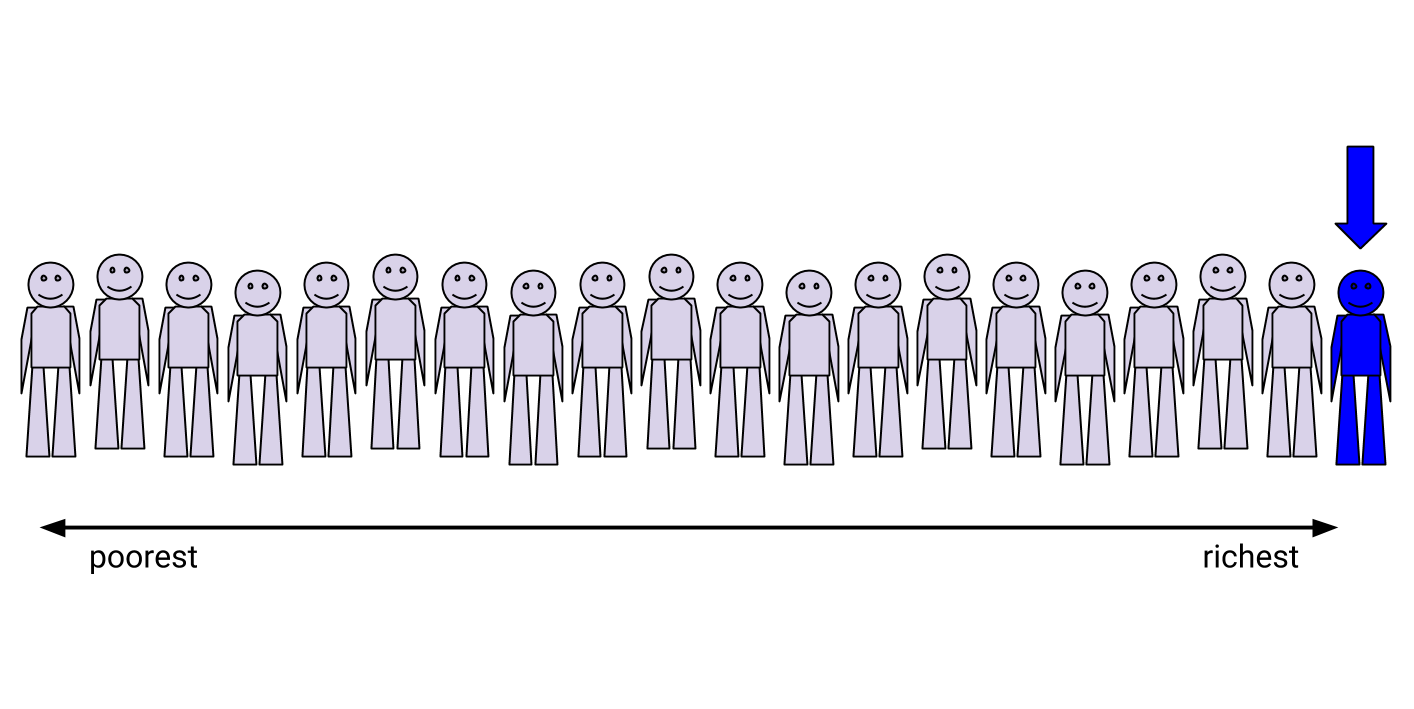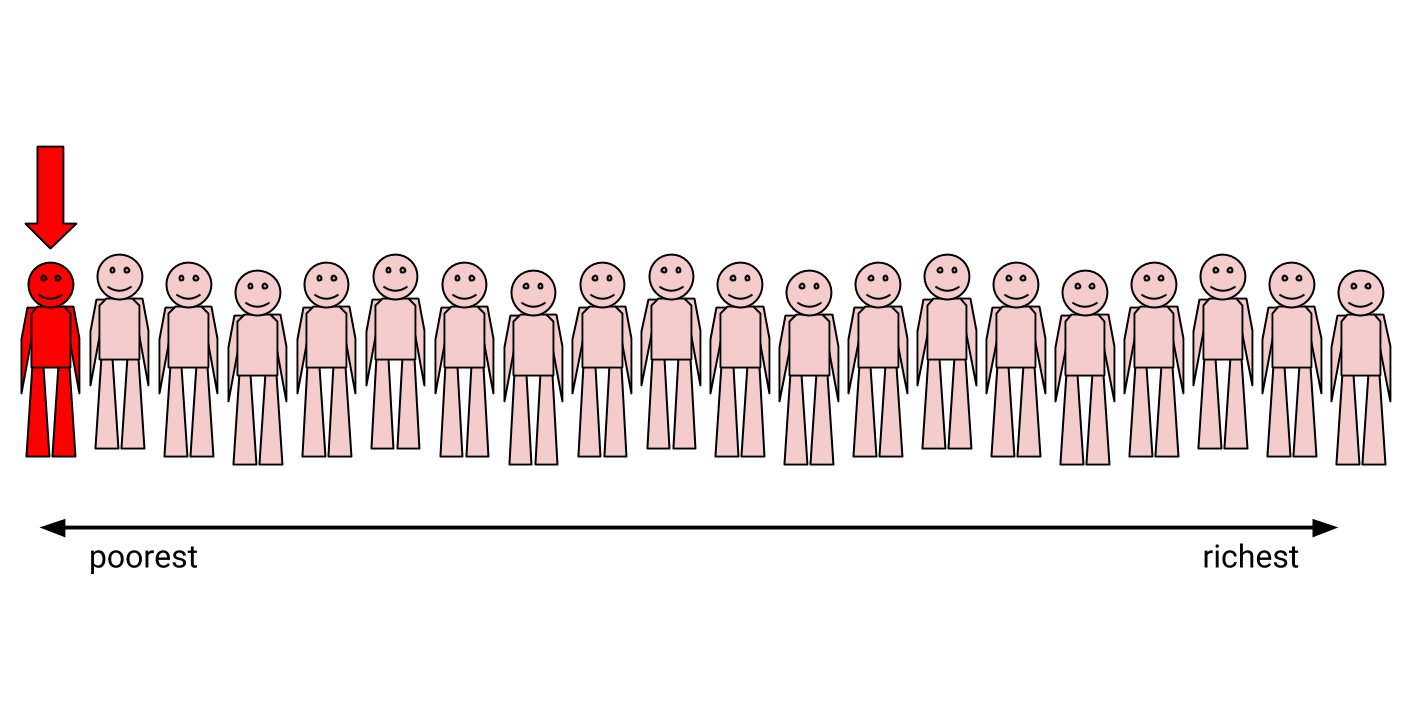Before we begin: imagine a very, very rich person in India. She's not the richest person in the country (who gets hundreds of millions of dollars each year, certainly), but she's close to the top of the national income distribution. If we were to split India into 20 groups according to income and line them up in a row, she would be the average member of the richest group.

Now imagine a very, very poor person in the U.S. She's not the absolute poorest person in the country (who makes $0 a year) but she's close to the bottom of the national income distribution. If we were to split the U.S. into 20 groups according to income and line them up in a row, she would be the average member from the poorest group.

The U.S. is a high-income country, and India is a middle-income country, so it's not surprising that the average person in the U.S. has a much higher income than the average person in India.
2005 data, from Branko Milanovic
The average person in the U.S. is just outside the top 10% of incomes in the world as a whole, whereas the average person in India is just above the bottom 20% of incomes in the world as a whole.
But now we get to our big question. Remember the very rich person in India we talked about earlier, and the very poor person in the U.S.?
How do you think their incomes compare?
Is the very rich person in India getting 10x more than the very poor person in the U.S. each year?
Or 100x more?
Or 1000x more?
Have a guess before you scroll
2005 data, from Branko Milanovic
It turns out that a very rich person in India (the average member of the top 5% of the Indian income distribution) is actually getting less than the average member of the bottom 5% of the U.S. income distribution.
I don't know about you, but I found this very surprising.
To be continued...
[Data, ideas, and everything from
Branko Milanovic]